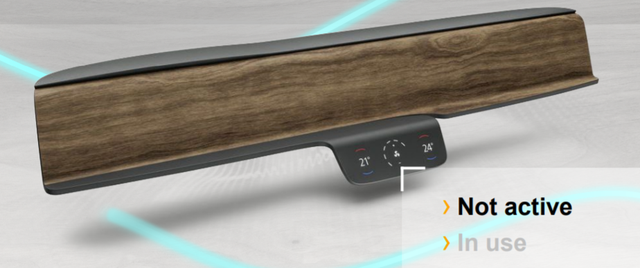


What is ShyTech, the next generation cockpit technology?
作者:芝能汽车 原文链接:https://mp.weixin.qq.com/s/aSuE-BwZM8_ewkqc6JdGig
I have been looking at many new technologies in cars recently, especially Continental's new ShyTech interior technology, which will be released at CES 2022 and will be launched in 2023.
The ShyTech display developed based on this technology has strong foresight. From the perspective of display technology, it has a high level of aesthetics, practicality, and safety. From the perspective of the overall design concept, this is aimed at reversing the trend of "large screens" in car interiors (the current mainstream design style is making the screen size increasingly exaggerated, and oversized screens can affect the coordination of car interiors).
With the support of flexible stealth technology, ShyTech can easily integrate the screen with interior design, wake up through voice or touch commands, and automatically adjust brightness and sharpness under any lighting conditions to avoid reflection.
Note: Let's take a closer look at whether this ShyTech display heralds the beginning of a new era of cockpit display.


Part 1 Evolution of Large Screen
The technological evolution of the entire cockpit has been presented in a very interesting and valuable way by the mainland.
As the screen grows larger, the core issue is that the proportion of screens inside the interior is too high. One is that it distracts attention too much, and the other is that it makes the car less designed.
Note: The automotive industry has always been balancing design and technology
In 2005, a 3.5-inch instrument panel with a 5-inch central control
In 2010, the instrument panel was 5-inch and the central control was 7-inch
In 2014, the instrument panel was 12.3-inch and the central control was 8-inch
In 2016, the instrument panel was 12.3-inch and the central control was 12.3-inch
In 2018, the instrument panel was 12.3-inch and the central control was 12 inches
In 2019, the instrument panel was 12.3-inch with a central control of 15 inches
In 2020, a 12.3-inch instrument panel with a 14 inch central control and a 12 inch front passenger screen were added
2021 Pillar to Pillar, through screen display

After entering the era of dominant interaction, the designer's idea was to introduce long dual screens, V-shaped screens, C-shaped screens, L-shaped screens, S-shaped screens, and wide Piller to Pillar screens.





Part 2 What is the technology of ShyTech?
This system is based on a 24 * 10 LED driven LCD system, featuring two unique backlight units and dedicated lighting configurations in both public and private modes, allowing for a combination of multiple viewing options.
In private mode, strong directional backlighting enables content to be visible only from the passenger's perspective.


This technology of switchable privacy displays can effectively reduce driver distraction, simplify operation, and enhance safety without affecting advanced functions.


The control panel consisting of buttons, lights, and switches is hidden and integrated with the display screen in a brand new way. All control options are visible only with relevant content.
And this interactive system can use methods such as voice, gestures, touch, etc.
